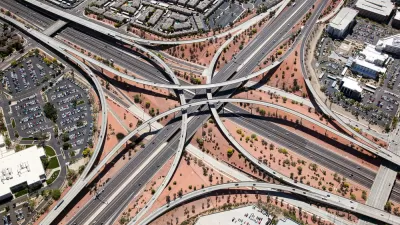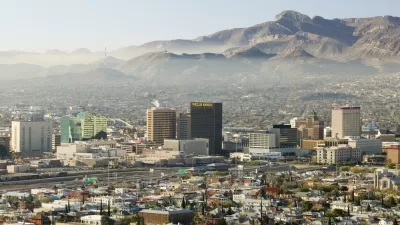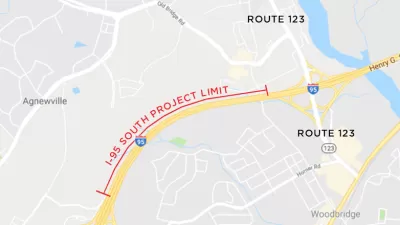The Arizona Department of Transportation has selected a developer for the Broadway Curve Improvement Project, which would widen Interstate 10, spanning multiple jurisdictions adjacent to Phoenix.
"The Arizona Department of Transportation has selected a preferred developer for a project to reconstruct a portion of Interstate 10 in Phoenix," reports Eleanor Lamb. That developer is a joint venture comprising Pulice Construction Inc., FNF Construction Inc., Flatiron Constructors and T.Y. Lin International.
According to ADOT, I-10's role as a key commercial corridor, linking the West Coast to the East Coast, necessitates the expansion of the freeway. Lamb provides more details about what ADOT is envisioning:
Proposed improvements include widening I-10 to six general-purpose lanes and two high-occupancy vehicle lanes and building a collector-distributor road system, which is meant to separate local and through traffic. The project also will include modifying I-10’s connections with state Route 143, Broadway Road and U.S. Route 60, as well as adding three pedestrian bridges to connect communities.
The stretch of I-10 targeted for the project runs for 11 miles between I-17 and State Route 2020. "Located southeast of downtown Phoenix, the project zone runs from the Salt River to Chandler and encompasses Tempe and Guadalupe," adds Lamb.
Phoenix Mayor Kate Gallego is quoted in the article touting the safety benefits of the proposed project, along with its potential economic benefits. On that latter score, Mayor Gallego cites the potential for $658 million in new economic activity.
"The project will be partially funded by the Maricopa Association of Governments’ Proposition 400, which is a sales tax dedicated to transportation purposes. Maricopa County voters approved Proposition 400 in 2004," according to the article.
FULL STORY: Arizona DOT Names Preferred Developer for I-10 Project in Phoenix Area

Trump Administration Could Effectively End Housing Voucher Program
Federal officials are eyeing major cuts to the Section 8 program that helps millions of low-income households pay rent.

Planetizen Federal Action Tracker
A weekly monitor of how Trump’s orders and actions are impacting planners and planning in America.

The 120 Year Old Tiny Home Villages That Sheltered San Francisco’s Earthquake Refugees
More than a century ago, San Francisco mobilized to house thousands of residents displaced by the 1906 earthquake. Could their strategy offer a model for the present?

HSR Reaches Key Settlement in Northern California City
The state’s high-speed rail authority reached an agreement with Millbrae, a key city on the train’s proposed route to San Francisco.

Washington State Legislature Passes Parking Reform Bill
A bill that would limit parking requirements for new developments is headed to the governor’s desk.

Missouri Law Would Ban Protections for Housing Voucher Users
A state law seeks to overturn source-of-income discrimination bans passed by several Missouri cities.
Urban Design for Planners 1: Software Tools
This six-course series explores essential urban design concepts using open source software and equips planners with the tools they need to participate fully in the urban design process.
Planning for Universal Design
Learn the tools for implementing Universal Design in planning regulations.
Ada County Highway District
Clanton & Associates, Inc.
Jessamine County Fiscal Court
Institute for Housing and Urban Development Studies (IHS)
City of Grandview
Harvard GSD Executive Education
Toledo-Lucas County Plan Commissions
Salt Lake City
NYU Wagner Graduate School of Public Service





























